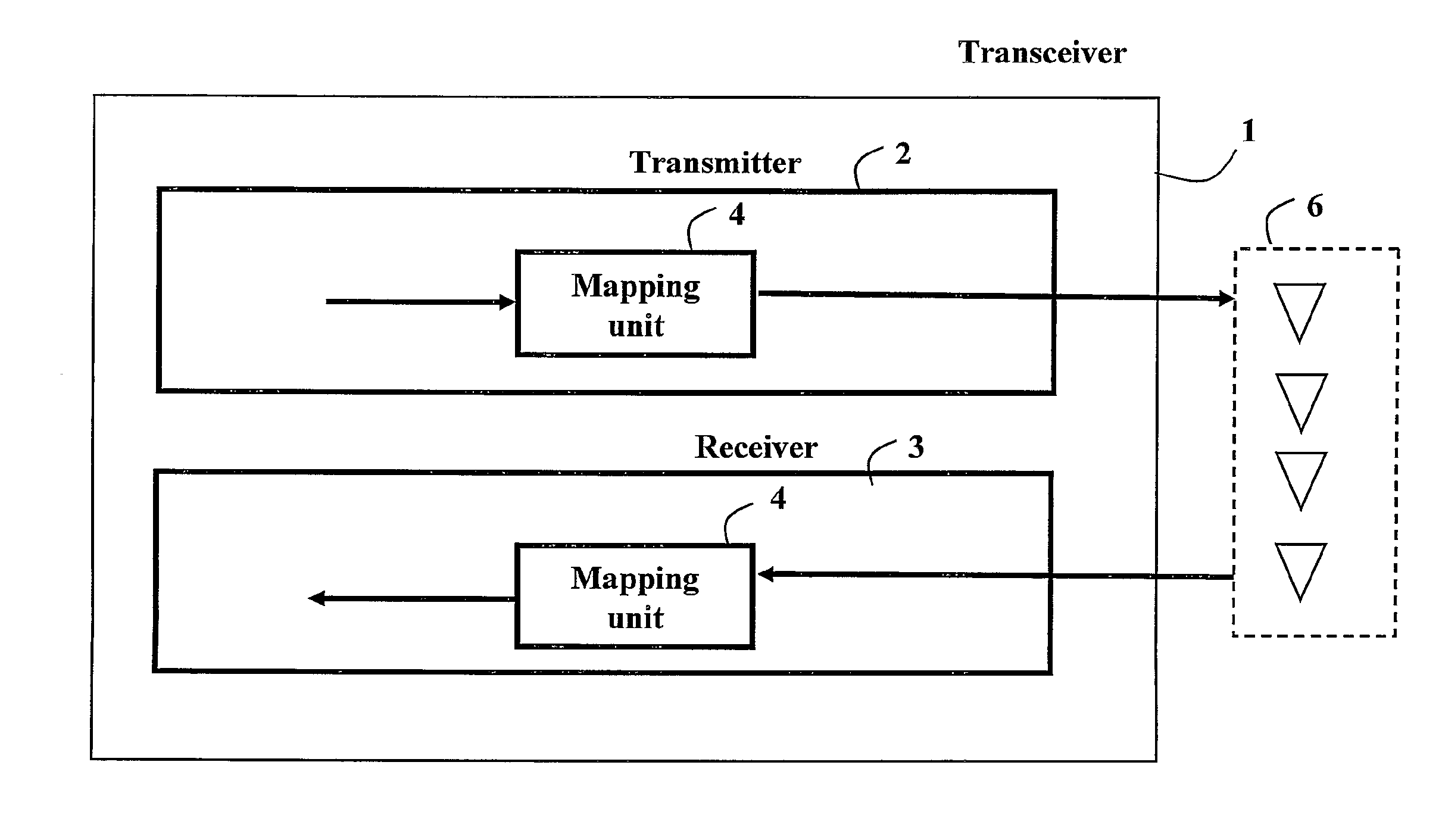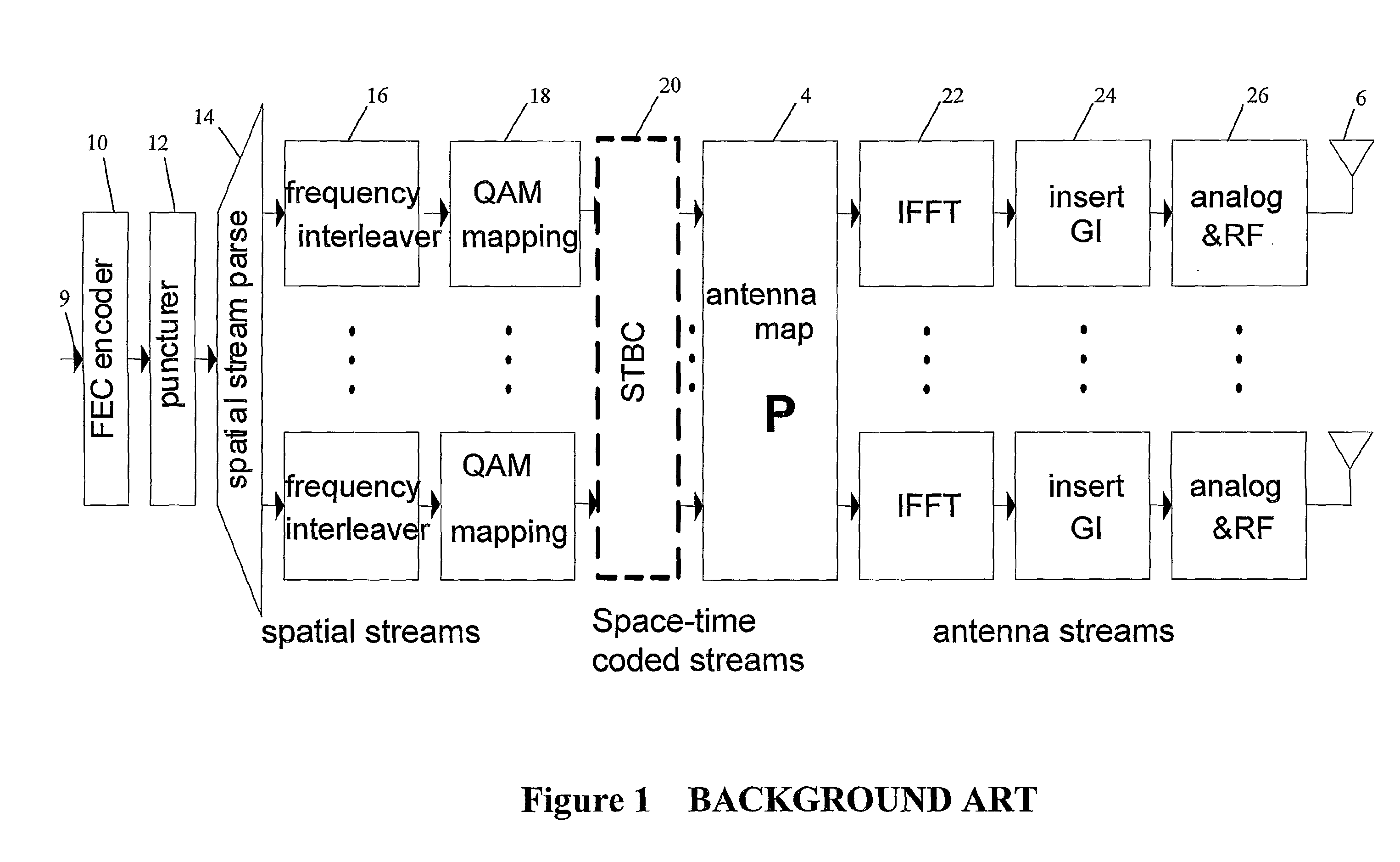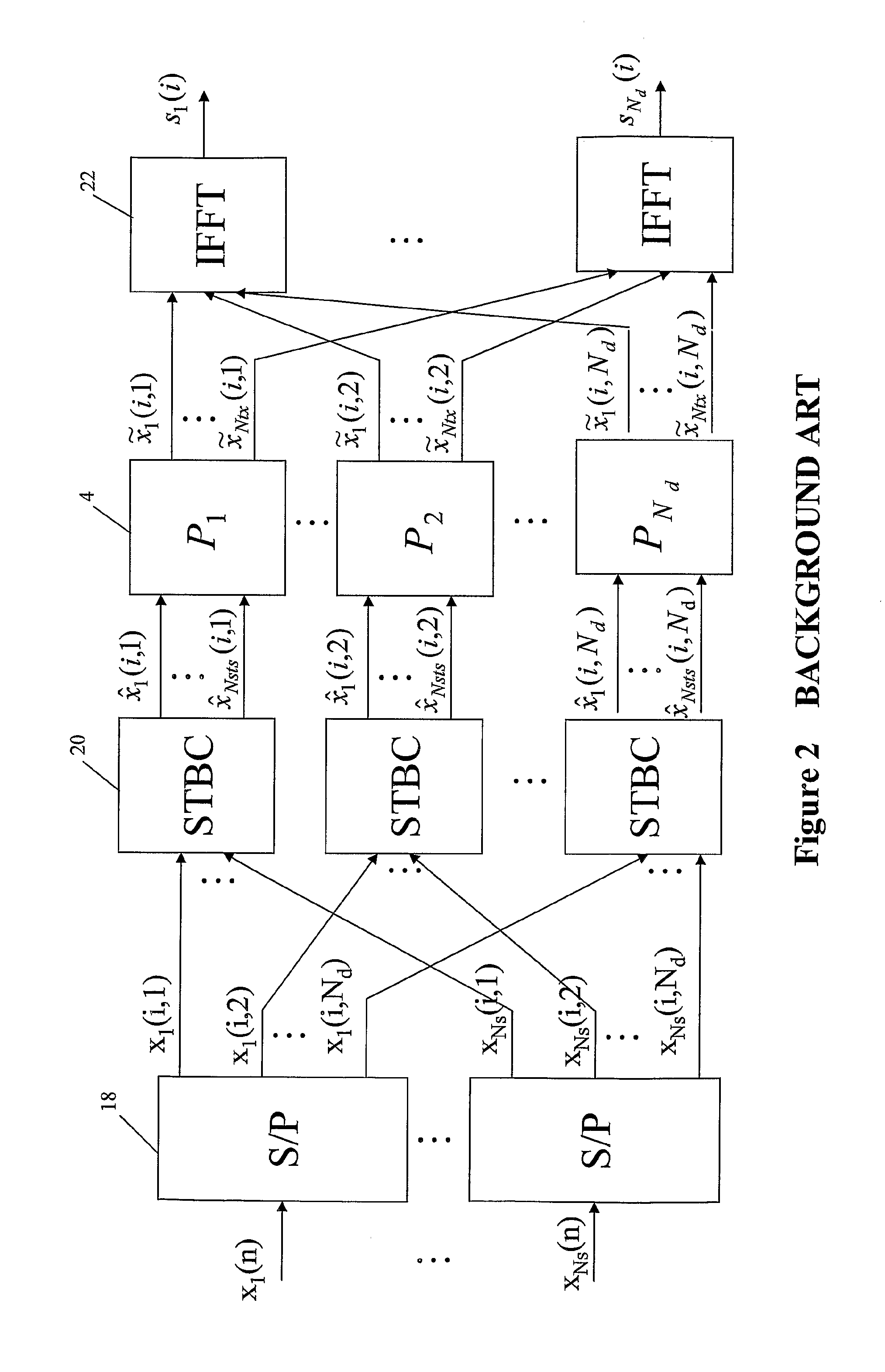Mapping for MIMO Communication Apparatus
a communication apparatus and mimo technology, applied in the field of mapping signals, can solve the problems of inability to implement a practical system, inability to use multiple streams, prohibitively complicated ml demodulation schemes,
- Summary
- Abstract
- Description
- Claims
- Application Information
AI Technical Summary
Problems solved by technology
Method used
Image
Examples
examples
[0064]First, in FIG. 5(A), for the 4 transmit antennas, with Ns=2 spatial streams, and Nsts=4 space-time coded streams, the T and P matrices can be fixed to be 4×4 identity matrices. Thus, the set Ω consists of 3 elements defined as:
Ω={S0=[1000010000100001],S1=[1000001001000001],S2=[1000001000010100]}.
[0065]One example of the predefined permutation pattern, which permutes through all the elements of Q, is:
S(i)=Smod(i,3).
Any known permutation that permutes through all the elements of Ω over the duration of the frame or plural consecutive frames can be used. Other permutation operations or methods for changing the value of the matrix S over the duration of the single frame (or over the duration of the plural consecutive frames) can be used as long as the receiver portion of the transceiver is made aware of, or learns by itself, the transmitter portion's predefined permutation pattern.
[0066]For the 3 transmit antennas, Ns=2 spatial streams, and Nsts=3 space-time coded streams case show...
case 2
2. MIMO-OFDM System Simulation Results
[0078]The structure of the system used in this simulation is shown in FIG. 6(C) and the antenna hopping pattern can be any of the patterns given in the above examples. The simulation parameters are listed as follow:
Channel ModelTGn channel BNumber of TX4Number of RX2STBCSee FIG. 5(A)DemodulatorLMMSE soft demodulator without SICFEC½, ¾ LDPC codes andconvolutional codesFEC decoderBP soft decoder with 30 iterations for LDPC andsoftViterbi for CCChannel seeds10000Modulation16QAM
From the simulation results shown in FIG. 11, it can be seen that the new scheme achieves more than 1 dB gain for all modulation coding settings (MCS) comparative to the situation without antenna hopping. Similarly, FIGS. 12-14 show the gain achieved by the various embodiments of the present invention when quadraphase-shift modulation is used.
[0079]The present invention includes processing of a signal input to the transmitter portion or received at the receiver portion, and ...
PUM
 Login to View More
Login to View More Abstract
Description
Claims
Application Information
 Login to View More
Login to View More - R&D
- Intellectual Property
- Life Sciences
- Materials
- Tech Scout
- Unparalleled Data Quality
- Higher Quality Content
- 60% Fewer Hallucinations
Browse by: Latest US Patents, China's latest patents, Technical Efficacy Thesaurus, Application Domain, Technology Topic, Popular Technical Reports.
© 2025 PatSnap. All rights reserved.Legal|Privacy policy|Modern Slavery Act Transparency Statement|Sitemap|About US| Contact US: help@patsnap.com



